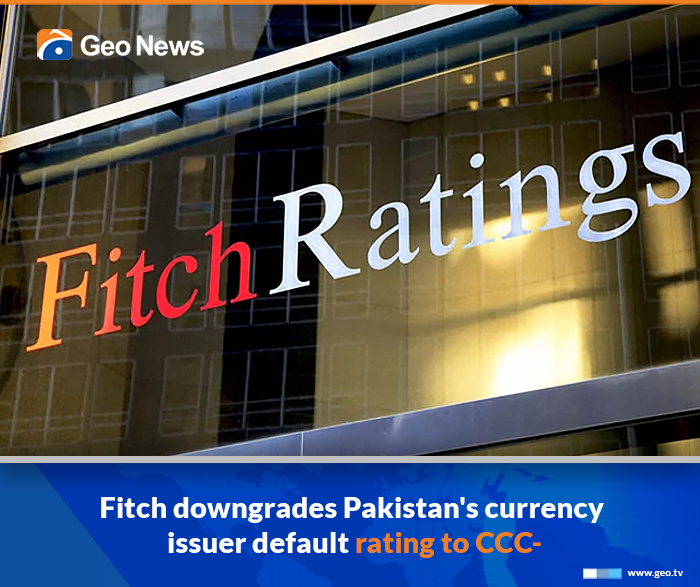WASHINGTON: The Fitch Ratings agency downgraded Pakistan’s long-term foreign-currency issuer default rating (IDR) to ‘CCC-’ from ‘CCC+’. A CCC minus rating denotes a very high level of default risk.
Fitch said it did not typically assign outlooks to sovereigns with a rating of ‘CCC+’ or below.
Earlier, in Oct of 2022, Moody’s also downgraded Pakistan’s IDR to CCC- from B-. Both Fitch and Moody’s are among the global top three companies. Their ratings reflect a steady deterioration.
The worsening liquidity, political volatility and decline of foreign-exchange reserves to critically low levels are the problems facing Pakistan.
The Dilemma
Fitch explained that the downgrading the reflects further sharp deterioration in external liquidity. Funding conditions and the decline of foreign exchange reserves to critically low levels.
It noted that shortfalls in revenue collection, energy subsidies and artificial exchange rate cap have held up the 9th review of Pakistan’s IMF program. It was originally due in Nov 2022.
“While we assume a successful conclusion of the 9th review of Pakistan’s IMF program, the downgrade also reflects large risks to continued program performance and funding, including in the run-up to this year’s elections”.
“Default or debt restructuring is an increasingly real possibility, in our view,” it noted.
According to the report, “the IMF’s conditions are likely to prove socially and politically difficult amid a sharp economic slowdown, high inflation, and the devastation wrought by widespread floods last year.”
The report pointed out that funding from bilateral donors was also contingent on IMF program. It added that “recent funding stress has been marked by the apparent reluctance of traditional allies China, Saudi Arabia and the UAE, to provide fresh assistance in the absence of an IMF program. The situation of Pakistan is also critical for other multilateral and bilateral funding.”
The Ray of Hope
The agency however forecast a modest recovery during the remainder of FY23 due to anticipated inflows and the recent removal of the exchange rate cap. “However, we expect reserves to remain at low levels,” the report said.
Pakistan’s external debt maturities in the second half (January-June) of FY23 is over $7bn. This requires financing for payments or rollover from the lenders to minimize risks.
Of the $7bn, $3bn represent deposits from China (SAFE) that are likely to be rolled over, and $1.7bn are loans from Chinese commercial banks which we also assume will be refinanced soon. The SAFE deposits are scheduled to mature in two instalments, $2bn in March and $1bn in June.
Pakistan’s CAD was $3.7bn in 1HFY23, down from $9bn in 1HFY22. “We forecast a full-year deficit of $4.7bn or 1.5pc of GDP in FY23 after $17bn or 4.6pc of GDP in FY22.
The narrowing of the CAD has been driven by restrictions on imports and foreign exchange availability, as well as by fiscal tightening, higher interest rates and measures to limit energy consumption.
Fitch said remittance inflows could also recover after they were partly switched to unofficial channels in 4Q22 to benefit from more favorable exchange rates in the parallel market.










